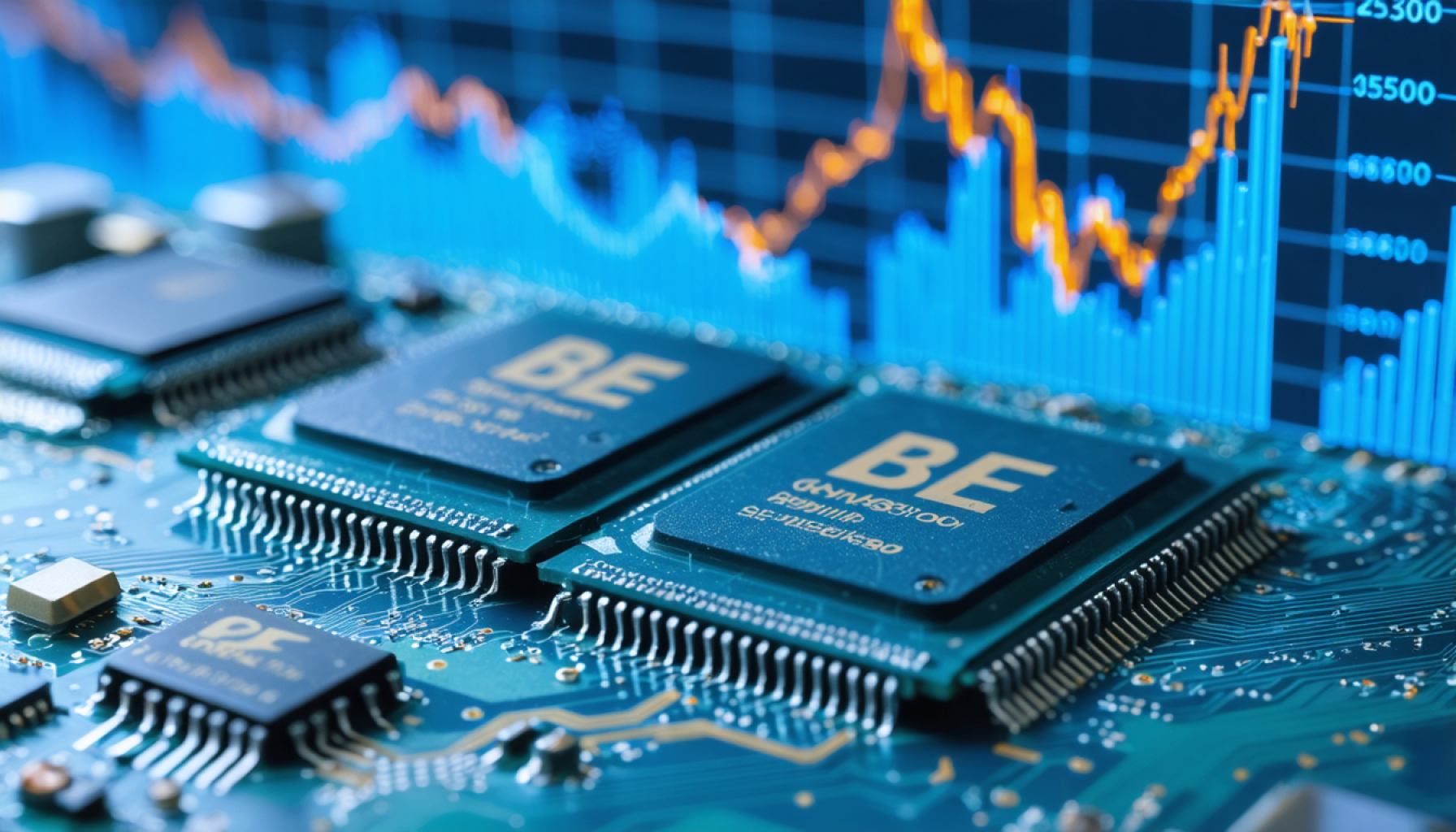- BE Semiconductor Industries is approaching an important ex-dividend date on April 25th, with a €2.18 dividend payment at stake.
- The dividend yield stands at 2.3%, but the company faces sustainability challenges, with a payout ratio of 94% of earnings and 101% of free cash flow.
- Despite these concerns, BE Semiconductor’s earnings have grown at an impressive 15% per annum over the last five years.
- Dividends have increased by nearly 29% annually over the past decade, reflecting aggressive growth.
- This high payout strategy could be risky during financial downturns, potentially impacting dividend sustainability.
- Investors must balance the promise of current returns with future uncertainties, staying vigilant to adapt strategies accordingly.
- The company’s ability to maintain dividend sustainability will influence its stock’s enduring value.
A storm brews around BE Semiconductor Industries N.V. as investors keenly eye the impending ex-dividend date—an event laden with promises of lucrative returns and whispered concerns over sustainability. As shareholders weigh their options, the financial tide suggests more than meets the eye.
The allure of a €2.18 dividend payment dances enticingly close, but the calendar compels action before April 25th to be in the running. Yet beneath this attractive yield of 2.3%, the seeds of curiosity deepen as the company grapples with an uncomfortable truth: it’s paying out a hefty 94% of its earnings. This figure drifts perilously beyond comfort, an echo amplified further when facings its cash flow situation—where 101% of free cash flow is surrendered as returns, leading to a vulnerable financial frontier.
Beyond the surface, BE Semiconductor’s earnings wear a more optimistic hue, painting a picture of growth at a brisk 15% per annum over the past five years. Despite this commendable financial sprint, the heavy reliance on earnings for payouts raises a collective eyebrow among dividend-investing stalwarts.
The dance of dividends over the past decade reveals a nearly 29% annual growth—a thrilling ascent for investors dreaming of fattened wallets. But here lies the catch: this aggressive payout strategy could find itself ensnared during financial downturns, challenging the sustainable tempo of dividend distribution.
Is BE Semiconductor a golden ticket for enduring wealth, or a fleeting perk poised for reevaluation? With this scenario, the wise investor treads cautiously, staying informed, and vigilant, ever ready to adapt strategies to the mercurial flow of BE Semiconductor’s financial narrative.
For those untangling the intricate weave of dividends and sustainability, the question looms: how will BE Semiconductor navigate its promising present and precarious future? The answer may dictate not just the course of its dividends, but the enduring value of its stock.
Is BE Semiconductor a Hidden Wealth Generator or a Risky Bet? Discover the Untold Story
Investors are abuzz with speculation as BE Semiconductor Industries N.V. (BESI) approaches its ex-dividend date. This pivotal moment offers a tempting yield but also unveils challenges that merit close examination. As you weigh the allure versus the risk, here’s a deeper dive into the financial nuances of BESI and strategic insights for investors.
A Closer Look at Dividend Sustainability
Dividend Payout Ratio Concerns:
– High Payout Ratio: BESI is currently paying out 94% of its earnings as dividends, a figure that alarms many experts due to its potential impact on reinvestment in company growth. This percentage is significantly higher than the average payout ratio for the semiconductor industry, which typically hovers around 40-60%.
– Free Cash Flow Issues: With 101% of free cash flow being used for dividends, there’s a concern over whether BESI can maintain this payout, especially during economic downturns.
Growth Trajectory:
– Despite concerns, BESI reported a 15% annual earnings growth over the last five years. This robust performance reflects a company focused on expansion and innovation, suggesting that it might manage risks by capitalizing on growth opportunities.
Understanding the Market Landscape
– Semiconductor Industry Trends: The semiconductor industry is experiencing transformative growth, driven by technological advancements in AI, IoT, and 5G technologies. These innovations could provide BE Semiconductor with additional revenue streams and counterbalance high dividend payouts.
– Competition and Market Position: BESI competes in a crowded market dominated by giants like ASML and Applied Materials. Its specialized focus on advanced packaging solutions presents both a niche advantage and a competitive challenge.
Pressing Investor Questions Answered
– Is the Dividend Safe? The safety of dividends in the short-term seems stable given recent growth, but long-term sustainability requires strict management of cash flow and strategic reinvestment.
– What Are the Risks of Overreliance on Dividends? Overreliance on dividends can hinder innovation and flexibility, putting the company at a disadvantage if the semiconductor market faces stagnation or decline.
Pros and Cons Overview
Pros:
– High Dividend Yield: Attractive for income-focused investors.
– Strong Growth Record: 15% annual growth over five years.
Cons:
– High Payout and Cash Flow Usage: Raises concerns about sustainability.
– Industry Volatility: Subject to shifts in technology trends and economic cycles.
Recommendations for Potential Investors
1. Diversify Investments: While BESI offers potential for short-term gains through dividends, balance your portfolio to mitigate risks with other less volatile investments.
2. Monitor Industry Trends: Stay informed about technological developments in the semiconductor sector, which can impact BESI’s market positioning and financial health.
3. Review Financial Health Regularly: Keep an eye on quarterly reports and cash flow statements to assess any shifts in payout strategies or financial stability.
Quick Tips for Investors
– Buy Before Ex-Dividend Date: To qualify for dividends, purchase shares before April 25th.
– Analyze Long-Term Strategies: Assess the company’s strategies for growth and innovation beyond just dividend yields.
For more insights and information about BE Semiconductor and the technology sector, visit BE Semiconductor Industries.
By approaching investments in BE Semiconductor with a focus on sustainability, financial health, and industry trends, you can make informed decisions poised for both potential profit and future growth.
